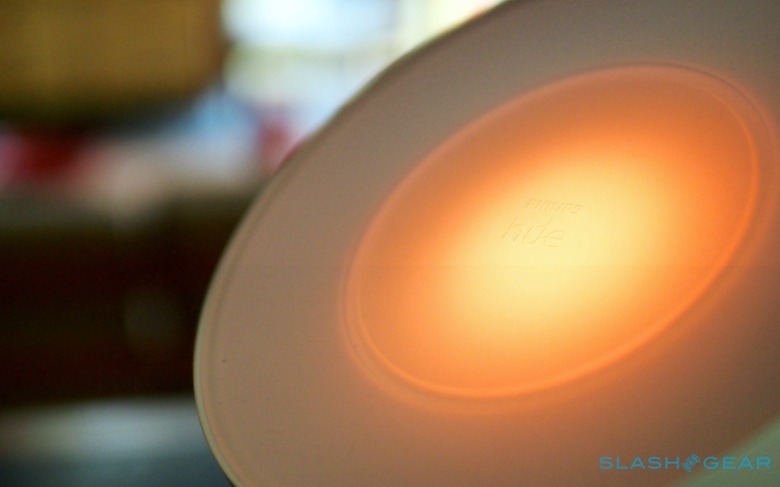Philips Hue Iris Table Lamp Review (2020) - Back, Brighter
- Brighter and more color-rich than original Iris
- Competitively priced
- Easy to setup with or without bridge
- Google Assistant and Amazon Alexa support
- Cord is fixed to lamp
- Materials look better than they feel
- Need a bridge for the more advanced features
What's old is new again, and the Philips Hue Iris table lamp returns with a welcome 2020 upgrade. Brighter, more flexible, and more competitively priced, the new Iris taps all of the features Signify has added to the Hue platform in the six years since the original table lamp launched, now with a $99.99 price tag.
Like before, the Iris looks a little like a futuristic jelly-fish, its transparent body reminiscent of some cyborg deep-sea creature. More important, though, is the fact that the diffuser is now translucent at the back, inside the clear housing. That means you not only get a flood of color from the front, but a matching backlight wash too.
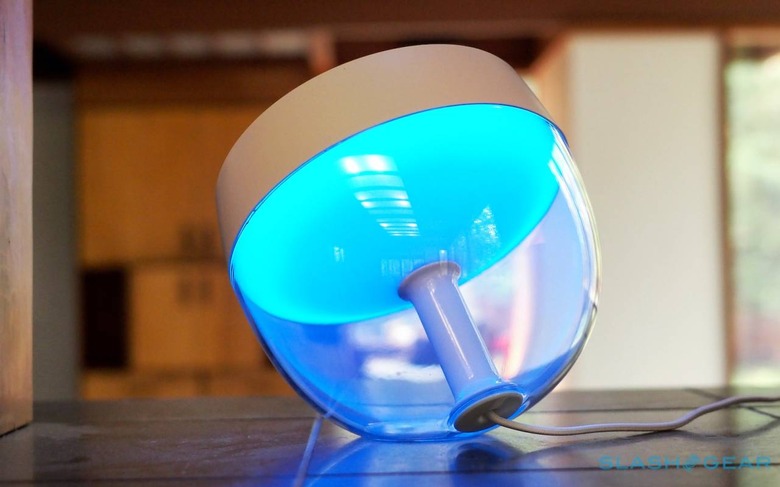
For the money, I'd have preferred the Iris' plastics to feel a little nicer to the touch. The white ring in particular comes across as a little cheap, and the whole thing is very light. You don't notice any of that from an arm's distance, however.
Another 2020 change is the cord. Previously a nondescript plastic, it's now fabric-wrapped; that leaves it looking nicer, and should hopefully make it more durable too. If the worst happens and you do damage it, mind, you're in trouble: the cord is fixed to the lamp and plugs into the power adapter, rather than the other way around.
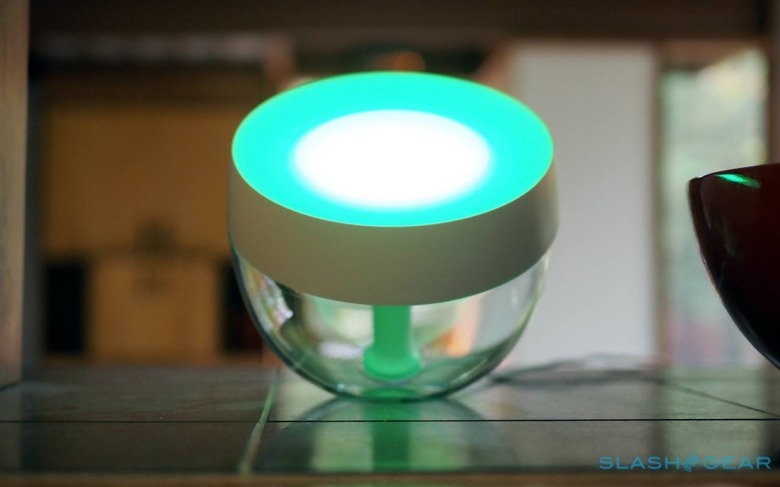
The biggest difference for 2020 is performance. With 570 lumens to play with, it'll crank up more than twice as bright as the old Iris, which topped out at 210 lumens. Colors are more saturated, too. At the other extreme, you can dim it further than the old lamp would go as well, under 1-percent brightness in fact.
It's all controlled through the Hue app, available for iOS and Android. Setup was complete in under two minutes, involving going into the settings of the app and waiting a moment for it to find the newly-plugged in Iris. After that, I could assign it to a room, and then either control it in tandem with the other bulbs and lamps in that room, or individually.
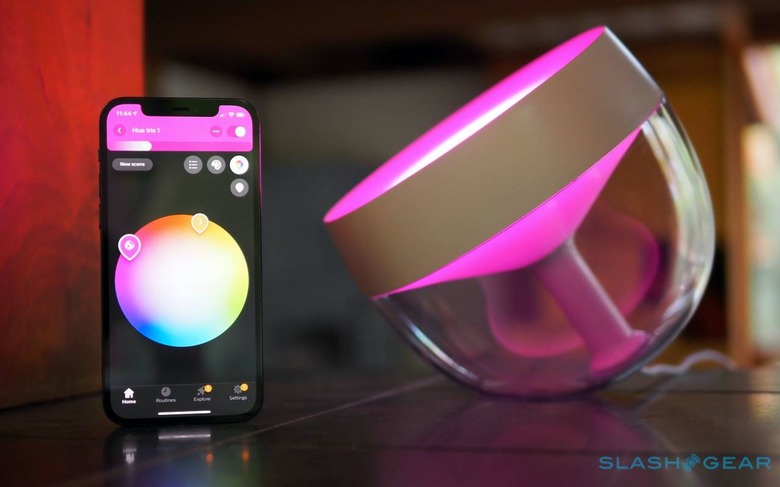
The app is straightforward, with a color wheel around which you can drag an Iris icon, and a brightness slider at the top. If you have a Philips Hue bridge it can pair with that, as I did; or, you can link it directly via Bluetooth to a phone. That's even simpler, though it does offer a more limited array of options. Without the bridge, for example, you can't activate the "Wake up" and "Go to sleep" routines, where the lamp mimics the rising and setting sun.
Amazon Alexa and Google Assistant support is all present and correct, and you can link your Hue account with IFTTT for broader routines, and with Apple HomeKit if you have a bridge. The Hue app also has light recipes which claim to help you focus, get energized, or wind down.
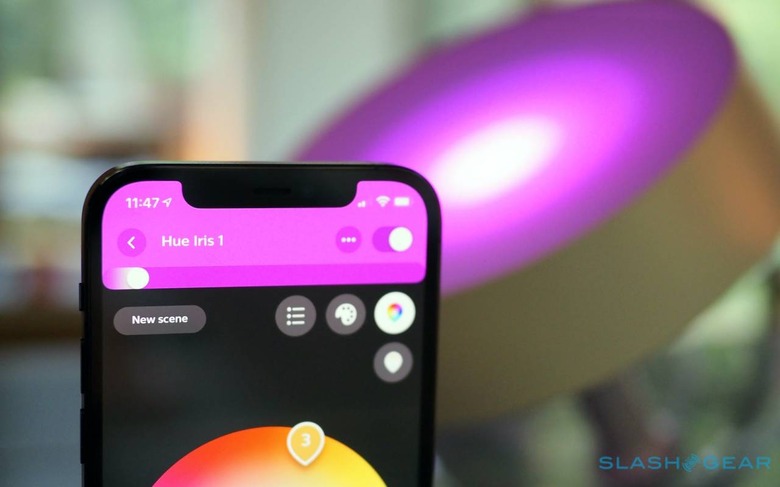
Iris is still intended to be an accent lamp, rather than task lighting: think flooding a wall with color, rather than replacing an overhead light. All the same, the brighter LEDs meant it can hold its own as a reading lamp if required. While the old Iris performed best in a darker room, the 2020 model makes a bigger difference even in daylight.
Philips Hue Iris Table Lamp Verdict (2020)
The old Iris wouldn't have been my choice for a first introduction to Hue, but this 2020 version changes that. The ability to get up and running without needing the Bridge – which you can optionally add in later on – makes it a much easier sell, while the $99.99 price tag is comparable to regular "design" lamps.
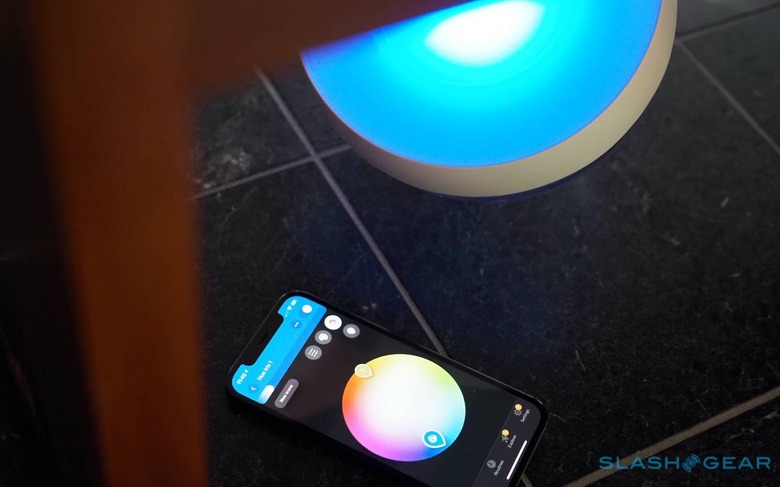
With the brighter, richer LEDs, meanwhile, the end result is more impressive, not to mention more usable. You may not want to throw away all your other bulbs, but Iris definitely feels more like a usable lamp rather than a glowing objet d'art. As winter draws near, it's a little splash of color that I'm increasingly glad of.

